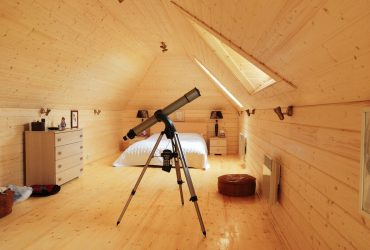Orion SpaceProbe 130ST Equatorial Reflector Telescope Review
Orion SpaceProbe 130ST Review
-
Performance - 86%86%
-
Ease of Use - 90%90%
-
Value for Money - 88%88%
Summary
While a bit more expensive than a starter telescope, the Orion SpaceProbe 130ST is well worth the money. It provides better optical performance and versatility than most other reflector telescopes in the market.
Reflector telescopes typically feature a long tube and focal length. This makes them less portable and limits wide-field views of deep sky objects.
The Orion SpaceProbe 130ST is the opposite of what you’d expect from a reflector telescope. It has a shorter tube and focal length, which makes it easier to carry around and provides fantastic views of nebulae, star clusters and galaxies.
Using the high-mag eyepiece, you can still observe nearby objects lie Jupiter, Saturn and the moon.
The SpaceProbe 130ST costs more than beginner Newtonian reflectors, but the price is still within a reasonable range for an amateur telescope. Read on to learn more in my full review.
Orion SpaceProbe 130ST Telescope Review

What are you buying?
1. 130mm Short Tube Reflector Telescope
The ST in SpaceProbe 130ST stands for short tube. The SpaceProbe 130ST is the short tube version of the popular Orion 130EQ reflector telescope.
The main difference between the two is the length of the tube. The 130ST has a 24” tube compared to 33” in the 130EQ.
This makes a big difference in weight, size and ease of portability. Finally, a powerful reflector telescope that you can travel with.
The shorter tube means the SpaceProbe 130ST has a smaller focal length of 650mm. This is not a bad thing, especially if you are looking to explore the deep sky in more detail.
While many Newtonian telescopes excel at lunar and planetary observations, the SpaceProbe 130ST’s wide field of view lets you view nebulae, clusters and galaxies in sharper detail.
That’s not to mean it’s terrible for nearby observations within the solar system. Put in the 10mm eyepiece and you’ll be able to make out cloud bands on Jupiter, craters on the moon and rings on Saturn.
2. Equatorial Mount
The powerful optics combined with an equatorial mount makes the SpaceProbe 130ST a great upgrade for amateur astronomers.
The equatorial mount lets you track objects easily as they appear to drift across the sky. All you need to do is align the mount and you can keep up with any object in the night sky.
The equatorial mount comes with slow motion hand controls for fine movements and dual setting circles to help you find objects using their coordinates.
3. Adjustable Aluminium Tripod
The equatorial mount sits on a height-adjustable aluminium tripod. Using aluminium instead of steel like in Celestron telescopes reduces overall weight while maintaining sturdy support.
The aluminium tripod includes a handy accessory tray for your eyepieces and other accessories.
How easy is it to use?
The SpaceProbe 130ST is very beginner-friendly. If this is your first telescope, you’ll find it easy to understand and operate.
Obviously, start with the user manual. It explains the first essential steps you need to take before you can start looking at the moon and stars.
The two most important ones are collimation (aligning the mirrors and eyepiece) and aligning the equatorial mount.
The SpaceProbe 130ST comes already collimated at the factory. You probably won’t need to make any adjustments, but it’s still a good idea to check using the included collimation cap.
Polar aligning the equatorial mount is also easy.
After the initial steps, you can use the setting circles on the mount to find interesting objects. Use the included red dot finderscope to help you focus on a specific object.
The SpaceProbe 130ST is not as straightforward as a click-and-go computerised telescope, but you only need a few nights to become a pro.
After that, it’s all a matter of hunting down the best views of the sky and switching between different optics for different kinds of observations.
What accessories are included?
- Two 1.25” eyepieces – 10mm (65x) and 25mm (26x)
- Finderscope
- Aluminium tripod with accessory tray
- 25” focuser
- Collimation cap
- Starry Night astronomy software
Orion SpaceProbe 130ST: Pros + Cons
Pros:
- Great for all kinds of observations – lunar, planetary and deep sky.
- Easy portability.
- Easy to use equatorial mount.
- Comes with all the accessories you need.
Cons:
- A bit pricey compared to other starter telescopes.
Anything else you should know?
If you want, you can add an electronic drive to the SpaceProbe 130ST equatorial mount. With the drive attached, you no longer have to use the knobs to move the telescope. You use a hand controller instead with buttons to drive the mount at different speeds.
This is great for users with a disability or anyone who finds it hard to use the manual controls.
Conclusion
While a bit more expensive than a starter telescope, the Orion SpaceProbe 130ST is well worth the money. It provides better optical performance and versatility than most other reflector telescopes in the market.
I especially recommend it to astronomy enthusiast looking for a capable reflector telescope they can travel with. It’s also great for anyone shopping for a Newtonian telescope that delivers high quality images of both nearby and deep sky objects.
Where to buy?
-
Amazon UK: >>Click here to check today’s price



